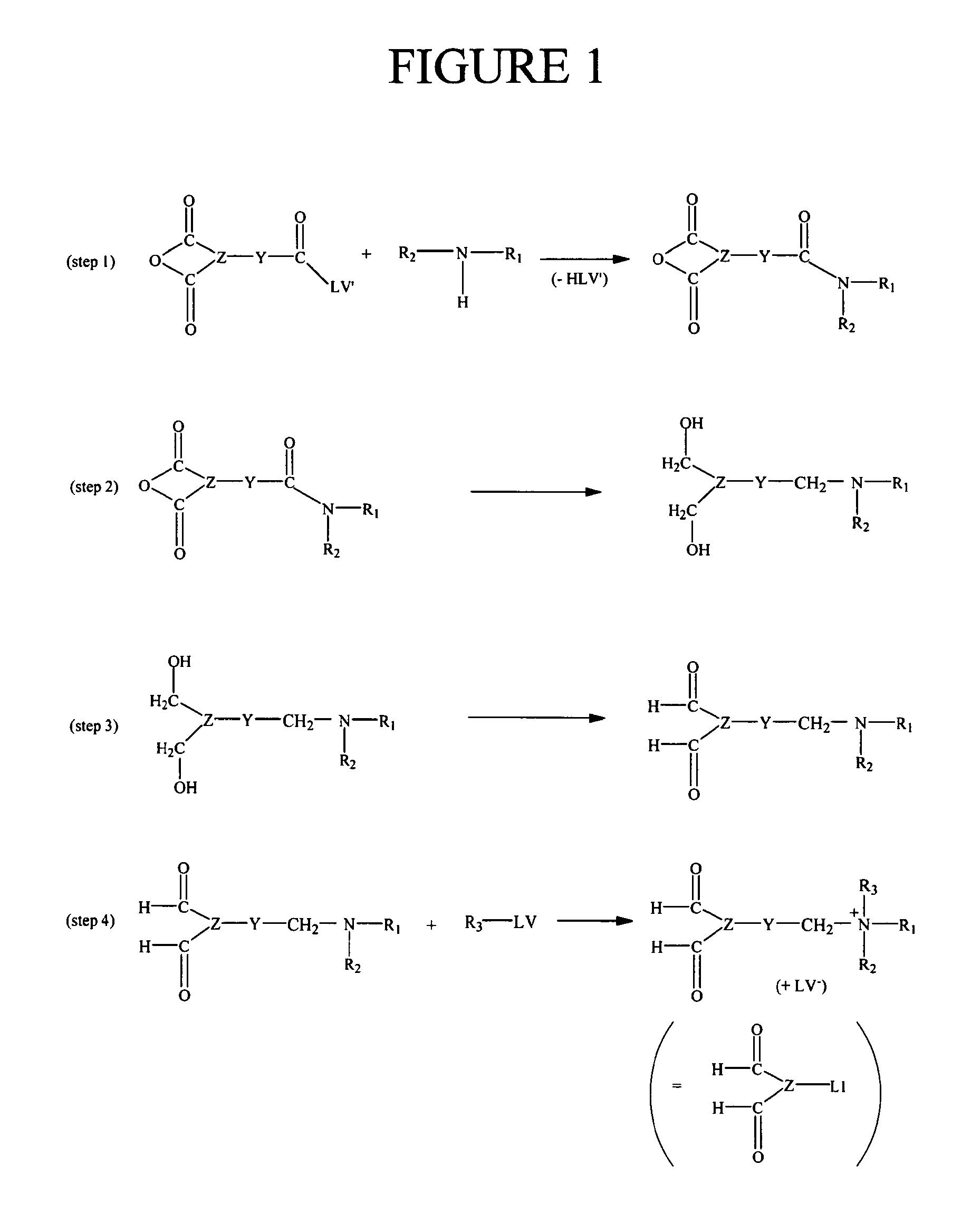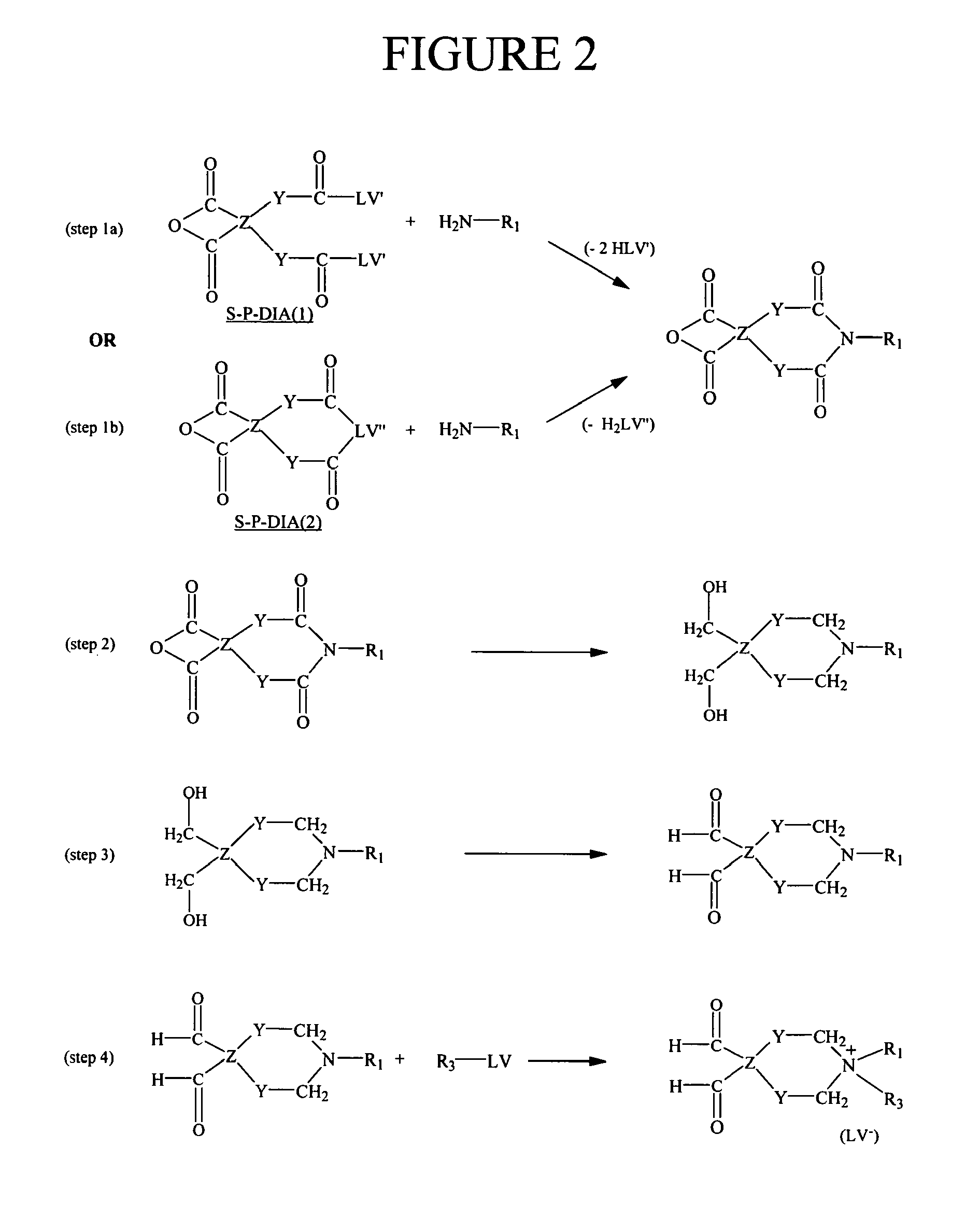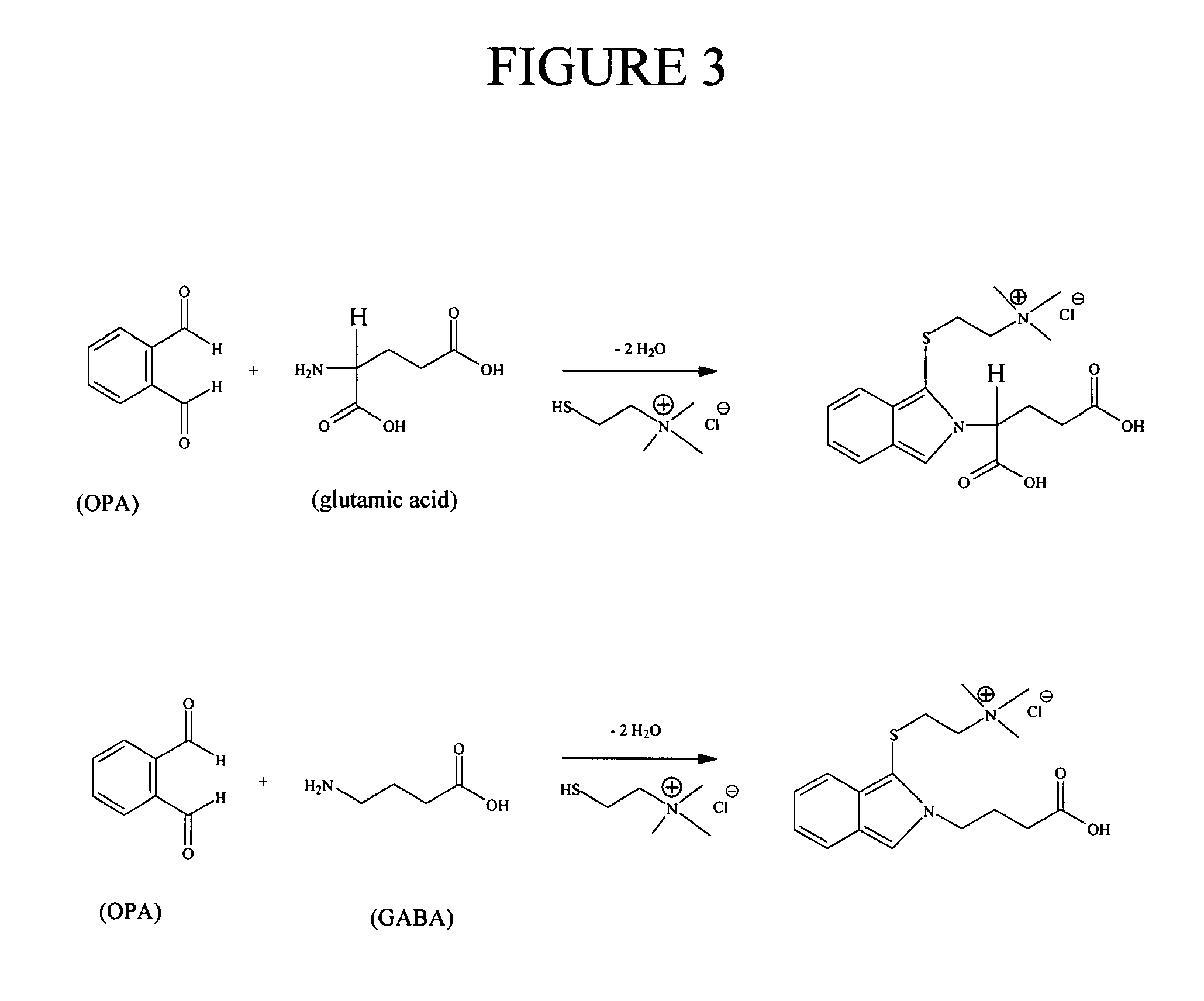Method for the determination of an analyte comprising a primary amino group, and kit for labeling said analyte
a technology of analytes and amino groups, which is applied in the field of determination of analytes comprising primary amino groups, and the labeling of kits for said analytes, can solve the problems of large concentration differences between different analytes, inability to analyze all pharmacologically relevant biogenic analytes in one run, and lack of sensitivity of analysis of biogenic monoamines, etc., to achieve accurate and selective determination, high selectivity, and high sensitivity
- Summary
- Abstract
- Description
- Claims
- Application Information
AI Technical Summary
Benefits of technology
Problems solved by technology
Method used
Image
Examples
example 1
Reactions of a Dialdehyde According to the Present Invention with a Primary and a Secondary Amine, in the Presence of Thiocholine, as Studied by Mass Spectrometry (Method: Direct Infusion); the Dialdehyde is O-Phtaldialdehyde (OPA)
[0256]A solution was prepared by mixing 0.8 mL of acetonitrile, 0.2 mL of a mixture containing 50 mg / mL of OPA in acetonitrile, 17 mL of H2O, 2 mL of a 200 mM NaOH (aq) solution, and 12.5 mg of thiocholine (TC). The resulting aqueous alkaline solution is referred to as the OPA / TC reagent.
[0257]The following experiments were performed using this reagent.
1—OPA,TC (reference)
[0258]10 μl of a 0.1% (v / v) solution of formic acid in water, hereinafter referred to as FAW-solution, was mixed with 90 μL of OPA / TC reagent. The mixture was allowed to react for a period of 2 minutes, at room temperature. Then, the reaction mixture was diluted with 900 μL of a solution containing acetonitrile, water and formic acid in volume ratios of 50:50:0.1.
2—PL,OPA,TC (reaction mix...
example 2
Reactions of a Monoaldehyde with a Primary and a Secondary Amine, in the Presence of Thiocholine, as Studied by Mass Spectrometry (Method: Direct Infusion); the Monoaldehyde is Benzaldehyde (BA)
[0264]A mixture was prepared containing 37.3 μL of benzaldehyde (BA) in 972.7 μL of acetonitrile. 0.2 mL of the resulting solution was mixed with 0.8 mL of acetonitrile, 17 mL of H2O, 2 mL of a 200 mM NaOH (aq) solution, and 12.57 mg of thiocholine (TC). The resulting aqueous alkaline solution is referred to as the BA / TC reagent. The concentration of BA in this reagent is approximately equimolar with the concentration of OPA in the OPA / TC reagent.
[0265]Using the BA / TC reagent, the following experiments were performed.
4—BA, TC (reference)
[0266]10 μA of a 0.1% (v / v) solution of formic acid in water was mixed with 90 μL of BA / TC reagent. The mixture was allowed to react for a period of 2 minutes, at room temperature. Then, the reaction mixture was diluted with 900 μL of a solution containing ace...
example 3
Labeling of Glutamate and Gamma-Aminobutyrate (GABA) Using o-Phtaldialdehyde and Thiocholine According to Reaction Scheme 4, Followed by Analysis Using LC-MS-MS; Preparation of Calibration Curve
[0273]GABA and glutamate (Glu) were diluted to 1 μM and 100 μM in Ringer buffer+0.1% formic acid (FA), respectively. The calibration curve was prepared from these stocks to the following concentrations: 1, 5, 10, 30, 50, 75, 100 nM GABA and 0.1, 0.5, 1, 3, 5, 7.5, 10 μM glutamate.
[0274]To all samples, 10 μl of an internal standard mix (containing 25 nM GABA-d6 and 2.5 μM glutamate-d5, final concentration) was added before analysis. The internal standard mix was prepared in Ringer.
[0275]The analytes in the resulting samples were subjected to a labeling process comprising o-phtaldialdehyde and thiocholine. This process was conveniently carried out using robotic sample derivatization. The derivatization reagent consisted of 0.2 ml 50 mg / ml o-phtaldialdehyde (OPA), 2 ml 200 mM sodium hydroxide, 0...
PUM
| Property | Measurement | Unit |
|---|---|---|
| volume | aaaaa | aaaaa |
| volume | aaaaa | aaaaa |
| volume | aaaaa | aaaaa |
Abstract
Description
Claims
Application Information
 Login to View More
Login to View More - R&D
- Intellectual Property
- Life Sciences
- Materials
- Tech Scout
- Unparalleled Data Quality
- Higher Quality Content
- 60% Fewer Hallucinations
Browse by: Latest US Patents, China's latest patents, Technical Efficacy Thesaurus, Application Domain, Technology Topic, Popular Technical Reports.
© 2025 PatSnap. All rights reserved.Legal|Privacy policy|Modern Slavery Act Transparency Statement|Sitemap|About US| Contact US: help@patsnap.com



